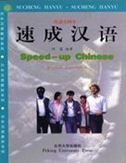Speed-up Chinese
Publisher:
Beijing University Press
Publication:
1/1997
Languages:
English
Binding:
Paperback
ISBN/SKU:
9787301032602
Pages:
398
Sizes:
201 x 140mm
Weight:
0.4250
In Stock To be dispatched within 1 business day
Special Price
£10.20
£10.20
Regular Price
£10.95
(€11.42)
The history of animal-themed paintings in China can be traced back to the Neolithic Age around 6,000 or 7,000 years ago when Chinese ancestors used the imagery of fish, bird and frog, which were closely related to their daily life, as decorative patterns on earthenware. In the periods of Shang (c. 1600-1100 BC) and Zhou (c.1100-256 BC), the sacred images of dragon and phoenix were embroidered on silk fabrics, while taotie (a mythical ferocious animal), buffalo and sheep were engraved on bronze wares produced in batches. The stone or brick tombs of the Qin (221-206 BC) and Han (206 BC-AD 220) dynasties were typically decorated with relief sculptures of domestic animals and battle steeds in particular. During the Wei-Jin period (220-420) and the Northern and Southern dynasties (386-589), animals like horse, deer, tiger and so on were also commonly depicted images in the large frescoes in tomb chambers or Buddhist grottoes.
In the Tang Dynasty (618-907) animal paintings became an independent genre of art, with Han Gan good at painting horses and Han Huang noted for his
In the Tang Dynasty (618-907) animal paintings became an independent genre of art, with Han Gan good at painting horses and Han Huang noted for his




